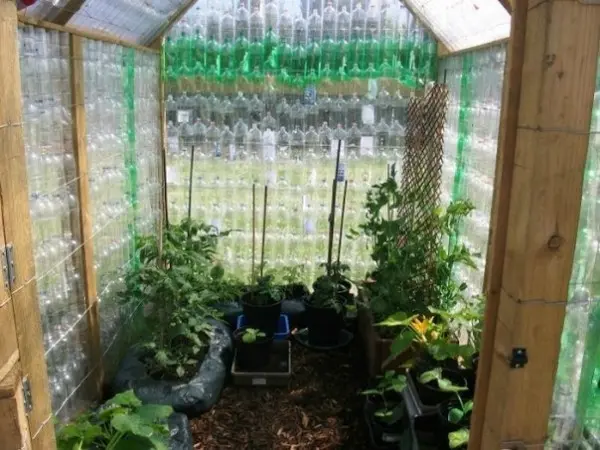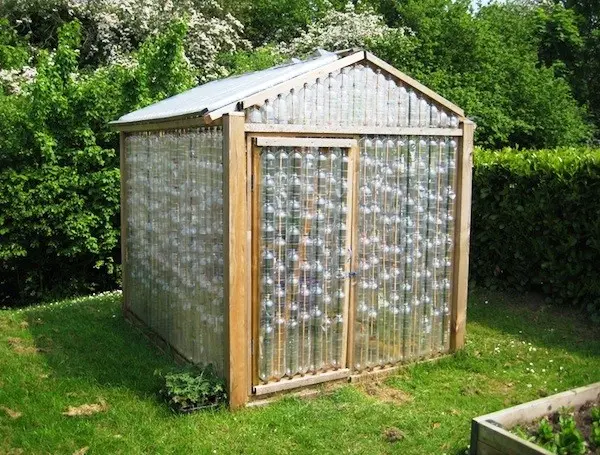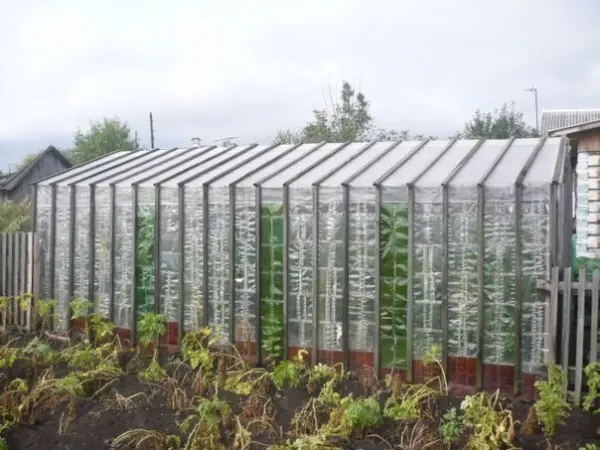Contents
One of the main components of a successful harvest is a greenhouse. A competent greenhouse allows you to get a fresh harvest of environmentally friendly vegetables, fruits and herbs. Eating home-grown products not only saves the family budget for food at times, but also improves health. With the help of greenhouses, you can grow a larger crop with less labor. A DIY greenhouse is a great way to save money. It is also a fun and rewarding activity that can be shared with all family members. In this article, we will tell you how you can also benefit the environment with the help of a homemade greenhouse. It is known that the average family annually throws away more than three hundred plastic bottles. But all this, unnecessary, at first glance, plastic can be used as an excellent building material for such a useful design in the country as a greenhouse made of plastic bottles.
Advantages
To date, there are many ways that describe how a bottle greenhouse should be made. These designs are distributed all over the world, and every year they become more and more popular. What is most interesting, even people with a fairly high income are engaged in their manufacture.

Such a greenhouse is much stronger than from a film, and it is also much warmer in it than in a similar greenhouse. In addition, such a design can stand on your site for more than one year. Making it yourself with the help of our master classes will not take you much time, and the results will only please you with high yields. Another advantage is that the greenhouse keeps the temperature inside on average 10 degrees Celsius higher than in the environment.
Thus, by keeping the temperature in the greenhouse, you can extend the summer season for your plants for a while. Depending on the climate, you will be able to enjoy your vegetables and fruits for several weeks longer than usual. By using plastic containers as a building material, you will make already huge landfills smaller. If everyone used plastic bottles to make such structures, there would be much less plastic waste landfills.
In case of any damage, you can easily and cost-effectively restore the greenhouse structure. All you need is just to replace one damaged bottle. Pull it out and change to a new one will take you only 5-10 minutes. When plastic bottles are fixed in place, they become resistant to any wind.

What you need
It is worth noting that it is not difficult to make this greenhouse, although some effort and a huge amount of plastic containers will be required. However, a do-it-yourself greenhouse will not only fulfill its direct functions, but will also become a special pride of your summer cottage. In order to make a greenhouse with your own hands measuring 2,5 by 1,8 m, you will need at least one and a half thousand plastic two-liter bottles. If you do not have such a large amount of containers, you can ask your neighbors or friends for them, and you can also contact restaurants or hotels in your city.
Video “Varieties of greenhouses from plastic bottles”
Video selection of original and practical greenhouses made of plastic bottles with your own hands.
Step by step guide
To design an unusual greenhouse according to the first master class, you need to rinse the plastic containers well and clean each of them from the labels. Please note that the greenhouse is best obtained from a two-liter container. From each bottle it is necessary to remove the caps and cut off the plastic bottom. As a result, you will be left with only the middle parts with necks, which must be folded into lines that form walls for future construction.

It is most convenient to string folded bottles on long sticks. Bamboo will work best, however, you need to consider that the sticks used should easily pass through the necks of the bottles. For these purposes, the wire is also perfect. It is also worth noting that the basis for any homemade greenhouse is a wooden frame, which you can do yourself or use the services of a professional carpenter or joiner.
The frame can also be built from ordinary firewood, which some people harvest for the winter. Once your wooden frame for the greenhouse is ready, proceed to attach sticks with plastic bottles to it. Try to keep them tightly pressed against each other. The maximum allowable distance should be no more than 0,1-0,5 cm.
To prevent drafts, a plastic container greenhouse can be insulated. For wrapping, you can use the usual bubble wrap, which is sold in many hardware stores. It performs its functions quite well and, moreover, it is inexpensive. In some cases, in order to make the greenhouse even more durable, sand is poured into the bottles and covered with a solution. This makes a homemade greenhouse made of plastic containers cool enough in hot weather.

For another simple and understandable DIY greenhouse making tutorial, you will need two-liter or three-liter bottles, a furniture stapler and scissors. To begin with, all bottles must be cleaned of stickers. To do this, you can soak them in water for a while. After that, the stickers are very easily separated from the bottles themselves.
Then we cut out in the bottles those places where there were stickers. As a rule, this surface is the most even and without protrusions. Each bottle is cut off the top and bottom. You should be left with a flat rectangular plate from each bottle. With the help of a furniture stapler, the plates are interconnected. A stapler with 6 mm staples is best suited. After that, each bracket must be bent.
Do not worry about the unevenness of the plates, because over time they straighten themselves. Another important point of this master class is that when fastening the plates together, they must be laid so that the bottom end is on top. Thus, during rain, water will drain well from the greenhouse and not get inside. Such a greenhouse is so durable that even in winter you do not need to collect it. He is able to calmly withstand any snow and frost and delight you for more than one season.

Video “Master class on creating a greenhouse”
A detailed description of the construction of a greenhouse from plastic bottles. Tips for economical use of material.









